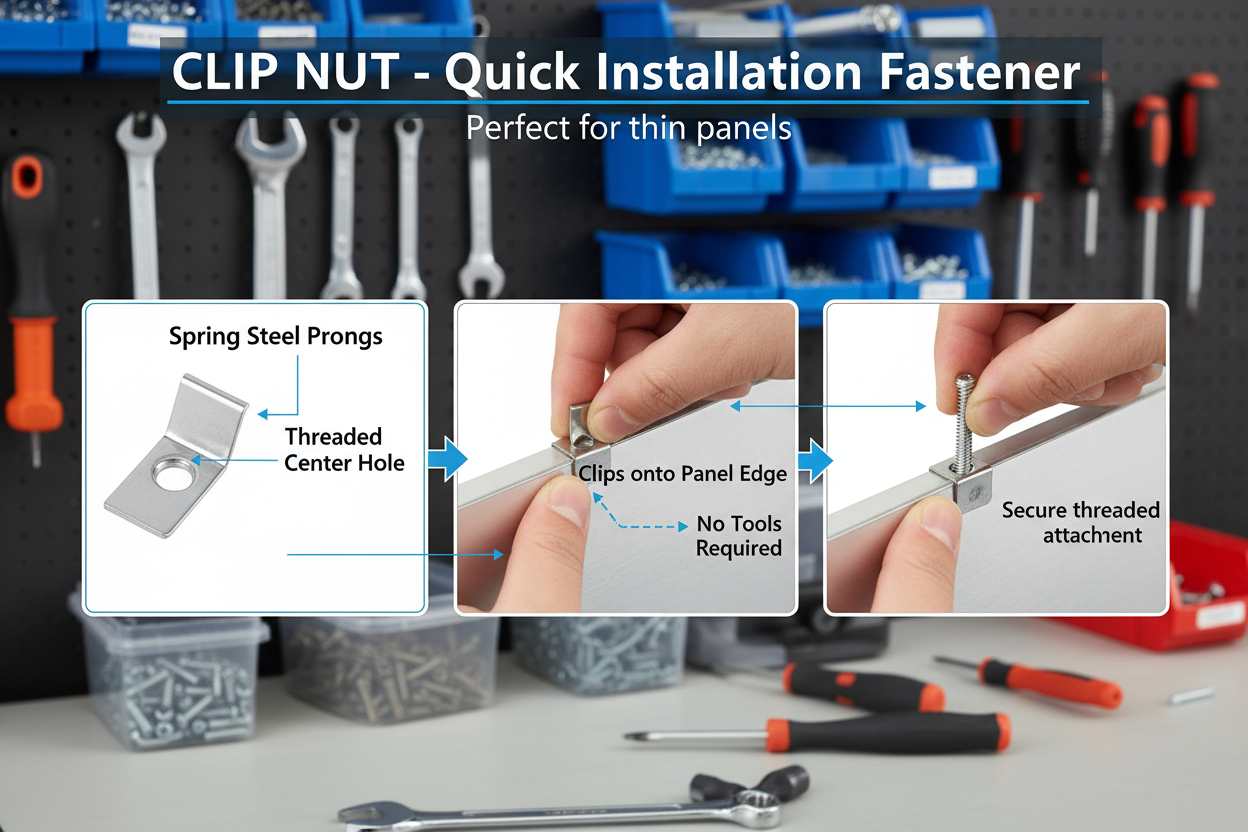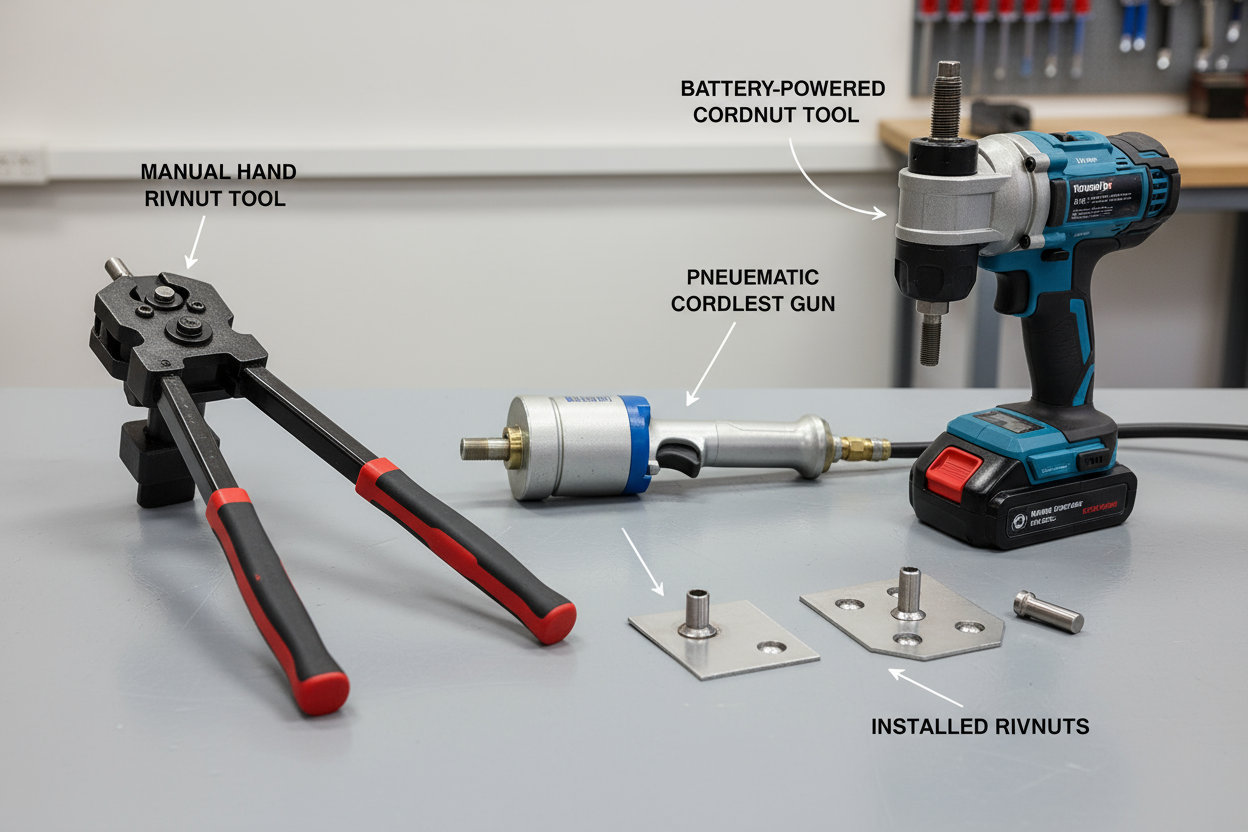Table of Contents
What Is a Wood Screw and How Does It Work?
Wood screws are specially designed fasteners created to join pieces of wood together securely. Unlike other screws, they feature unique characteristics that make them ideal for wood applications. The sharp point allows them to penetrate wood fibers easily, while the coarse threads provide maximum grip in the relatively soft material.
When you drive a wood screw into wood, the threads cut into the wood fibers, creating a strong mechanical bond. The unthreaded shank near the head allows the top piece of wood to pull tight against the bottom piece, creating a secure joint without gaps.
Key Features and Benefits of Wood Screws
Identifying wood screws is easier when you know what characteristics to look for:
- Coarse Threads: Wood screws have wider-spaced, deeper threads compared to machine screws or sheet metal screws. This design provides better grip in wood fibers.
- Sharp, Tapered Point: The sharp tip allows the screw to penetrate wood easily without the need for pre-drilling in softer woods.
- Partially Threaded Shank: Most wood screws have an unthreaded section just below the head, which helps pull wood pieces tightly together.
- Various Head Types: You'll find flat, round, and oval heads designed to sit flush, protrude, or be countersunk respectively.
- Wide Variety of Materials: From stainless steel and brass to coated options, wood screws come in materials that resist corrosion and provide longevity.
The benefits of using proper wood screws include stronger joints, reduced wood splitting, easier installation, and more professional-looking results in your DIY projects.
Common DIY Applications for Wood Screws
Wood screws are versatile fasteners suitable for numerous home improvement and woodworking projects:
- Furniture Building: From bookshelves to tables, wood screws provide sturdy joints that withstand daily use.
- Deck Construction: Specially coated deck screws resist moisture and won't corrode in outdoor conditions.
- Cabinetry: Wood screws offer the holding power needed for cabinet boxes and face frames.
- Woodworking Joints: Use wood screws to reinforce mortise and tenon, butt, or miter joints.
- General Repairs: Fix loose chair legs, wobbly tables, or broken wooden fixtures around your home.
For all these applications, having the right type and size of wood screws is essential for achieving professional, long-lasting results.
How to Choose the Right Wood Screw
Selecting the appropriate wood screw for your project involves considering several factors:
- Length: Choose a screw that's long enough to penetrate the bottom piece of wood by at least half its thickness, but not so long that it goes completely through.
- Diameter: Thicker screws provide more holding power but require pre-drilling in hardwoods to prevent splitting.
- Head Style: Flat heads for flush mounting, round heads when appearance isn't critical, and oval heads for a decorative touch.
- Drive Type: Phillips, square, and star drives each offer different levels of torque and cam-out resistance.
- Material and Coating: Consider indoor vs. outdoor use. Stainless steel or coated screws are essential for outdoor projects.
Our wood screw collection offers various options to suit any project need, from fine woodworking to heavy-duty construction.
Tips and Common Mistakes to Avoid
Even experienced DIYers can make mistakes with wood screws. Here's how to avoid common pitfalls:
- Always Pre-Drill in Hardwoods: Skipping this step often leads to split wood, especially near the edges of your workpiece.
- Match the Pilot Hole Size: The pilot hole for the threaded portion should be slightly smaller than the screw's core diameter, while the clearance hole for the shank should match the screw's diameter.
- Don't Overtighten: Stop turning when the head is flush with the wood surface. Overtightening can strip the threads or damage the wood.
- Use the Right Driver: Ensure your driver bit matches the screw head perfectly to prevent cam-out and damage to the screw.
- Consider Wood Movement: In outdoor projects, account for wood expansion and contraction with seasonal changes.
- Avoid Mixing Metals: Using dissimilar metals (like steel screws in aluminum) can cause galvanic corrosion.
Frequently Asked Questions
What's the difference between wood screws and drywall screws?
Drywall screws are thinner, fully threaded, and more brittle than wood screws. They're not designed for structural applications and may snap under stress. Always use proper wood screws for woodworking projects.
Can I use wood screws in particle board or MDF?
Yes, but coarse-threaded wood screws work best in these materials. For optimal holding power in particle board, consider using specialized particle board screws with longer, more pronounced threads.
Do I always need to pre-drill for wood screws?
In softwoods, you can often drive wood screws without pre-drilling, especially with smaller diameters. For hardwoods, near edges, or with larger screws, pre-drilling is essential to prevent splitting.
What's the advantage of square-drive or star-drive wood screws?
These drive types offer better torque transfer and reduced cam-out compared to Phillips heads, meaning fewer stripped screws and easier driving, especially in hardwoods.
Conclusion
Identifying wood screws is a fundamental skill for any DIY enthusiast. By recognizing their coarse threads, sharp points, and partially threaded shanks, you can confidently select the right fastener for your woodworking projects. Remember that using the proper wood screws not only makes your work easier but also ensures stronger, more professional-looking results that stand the test of time.
Ready to tackle your next woodworking project with the right fasteners? Browse our extensive collection of quality wood screws at HomeDiyer.com - where DIY enthusiasts find the tools and supplies they need at prices that make sense.
Shop Wood Screws Now








